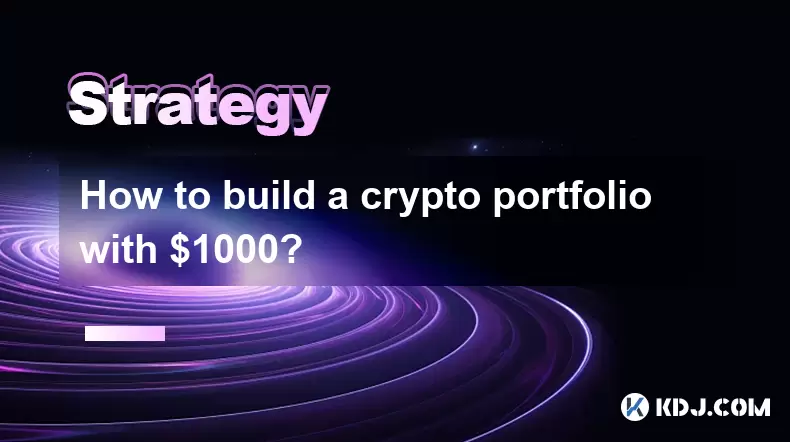-
 Bitcoin
Bitcoin $118,698.3676
0.16% -
 Ethereum
Ethereum $3,428.4877
5.97% -
 XRP
XRP $3.2496
9.52% -
 Tether USDt
Tether USDt $1.0002
0.00% -
 BNB
BNB $725.6930
4.36% -
 Solana
Solana $174.8923
4.52% -
 USDC
USDC $0.9997
-0.02% -
 Dogecoin
Dogecoin $0.2139
6.02% -
 TRON
TRON $0.3155
4.62% -
 Cardano
Cardano $0.8045
7.12% -
 Hyperliquid
Hyperliquid $46.6582
-1.72% -
 Stellar
Stellar $0.4676
0.80% -
 Sui
Sui $4.0143
0.38% -
 Chainlink
Chainlink $17.1546
2.97% -
 Hedera
Hedera $0.2458
3.27% -
 Bitcoin Cash
Bitcoin Cash $496.5967
-0.06% -
 Avalanche
Avalanche $22.8813
3.13% -
 Shiba Inu
Shiba Inu $0.0...01439
3.42% -
 UNUS SED LEO
UNUS SED LEO $8.8389
0.42% -
 Toncoin
Toncoin $3.2113
2.82% -
 Litecoin
Litecoin $101.2646
4.24% -
 Polkadot
Polkadot $4.2262
2.32% -
 Monero
Monero $340.4295
2.92% -
 Pepe
Pepe $0.0...01365
2.92% -
 Uniswap
Uniswap $8.9702
-2.78% -
 Bitget Token
Bitget Token $4.7675
2.00% -
 Dai
Dai $0.9998
-0.02% -
 Ethena USDe
Ethena USDe $1.0003
-0.04% -
 Aave
Aave $324.6394
-2.11% -
 Bittensor
Bittensor $433.6051
-0.88%
How to extend the mining life by optimizing rx580's cooling solution?
Optimizing RX 580 cooling via passive (case airflow, undervolting, fan curves) and active (aftermarket coolers, liquid cooling) methods extends its mining lifespan. Consistent temperature monitoring below 70°C prevents premature failure.
Feb 28, 2025 at 07:54 pm

How to Extend the Mining Life by Optimizing RX 580's Cooling Solution?
Key Points:
- Understanding the RX 580's thermal limitations and their impact on lifespan.
- Implementing effective passive cooling strategies: case airflow optimization, undervolting, and fan curve adjustments.
- Utilizing active cooling enhancements: aftermarket coolers, liquid cooling solutions, and fan modifications.
- Monitoring temperature and performance metrics for proactive maintenance.
- Preventative measures to avoid premature hardware failure.
How to Extend the Mining Life by Optimizing RX 580's Cooling Solution?
The AMD Radeon RX 580, while a popular choice for cryptocurrency mining due to its relatively high hash rate and affordability, suffers from thermal limitations. Its lifespan, especially under the intense heat generated during continuous mining operations, is significantly affected by its cooling capabilities. Optimizing the RX 580's cooling solution is crucial for extending its operational life and maintaining consistent performance. This involves a multi-pronged approach encompassing both passive and active cooling strategies, meticulous monitoring, and preventative maintenance.
- Understanding the RX 580's Thermal Limitations and Their Impact on Lifespan:
The RX 580, like many graphics cards designed for gaming, wasn't engineered for the continuous, high-load operation demanded by cryptocurrency mining. The GPU and VRAM generate substantial heat during prolonged mining sessions, pushing the components to their thermal limits. Exceeding these limits leads to thermal throttling, where the card reduces its clock speeds to prevent overheating, resulting in a decrease in hash rate and mining efficiency. More critically, prolonged operation at high temperatures accelerates component degradation, leading to premature failure of the GPU, VRAM, or other critical components. This degradation manifests in various ways, including increased fan noise, instability, artifacts on the screen (if connected to a display), and ultimately, complete system failure. The lifespan of the card is directly correlated to the average temperature it experiences during operation. Keeping the temperature consistently below 70°C (158°F) is generally considered ideal for extending its lifespan, while temperatures exceeding 80°C (176°F) significantly increase the risk of damage. Understanding these thresholds is the first step towards optimizing the cooling solution. The manufacturer's specifications should be consulted for precise temperature limits, but general guidelines from the cryptocurrency mining community suggest maintaining temperatures as low as possible within safe operating ranges. Analyzing the specific model of RX 580 is also critical as different manufacturers may utilize different cooling solutions with varying levels of efficiency. The quality of the thermal paste applied during manufacturing also impacts heat transfer efficiency. Poorly applied thermal paste can lead to hotspots on the GPU die, significantly accelerating degradation.
- Implementing Effective Passive Cooling Strategies:
Passive cooling focuses on improving airflow and heat dissipation without adding active cooling components like additional fans or liquid coolers. Several strategies can significantly improve the RX 580's thermal profile:
* **Case Airflow Optimization:** The case in which the RX 580 is housed plays a vital role in passive cooling. Adequate airflow is essential to prevent heat buildup. Ensure the case has sufficient intake and exhaust fans strategically positioned to create a positive pressure environment, pulling cool air in and expelling hot air. Consider replacing standard case fans with higher CFM (Cubic Feet per Minute) fans for improved airflow. Avoid obstructing airflow pathways with cables or other components. Proper cable management is essential for maintaining optimal airflow within the case. The orientation of the graphics card within the case can also impact cooling. Positioning it vertically, if the case allows, can sometimes improve airflow around the card. The use of strategically placed fans can also direct cool air towards the graphics card and away from hot components.
* **Undervolting:** Reducing the voltage supplied to the RX 580 can significantly lower its power consumption and, consequently, its heat output. Undervolting can be achieved using software like MSI Afterburner or WattMan, allowing for fine-grained control over voltage and clock speeds. This process involves carefully reducing the voltage while monitoring for stability. While undervolting will slightly reduce the hash rate, the decrease in temperature and power consumption often outweighs this minor performance penalty in the long run, contributing to a longer lifespan. It's a delicate balance; too much undervolting can lead to instability, while insufficient undervolting won't significantly improve cooling. Finding the optimal undervolting settings requires careful experimentation and monitoring.
* **Fan Curve Adjustments:** The default fan curve on the RX 580 may not be optimal for mining. Adjusting the fan curve to ramp up the fan speed at lower temperatures can prevent the card from reaching excessively high temperatures. This proactive approach ensures that the fans are actively cooling the card before it reaches its thermal limits. Custom fan curves can be created using software like MSI Afterburner or WattMan. The goal is to balance fan noise with effective cooling. While running the fans at maximum speed will provide the best cooling, it will also generate significantly more noise. The ideal fan curve will maintain a balance between quiet operation and effective heat dissipation.
- Utilizing Active Cooling Enhancements:
Active cooling strategies involve adding external cooling components to improve heat dissipation.
* **Aftermarket Coolers:** Replacing the stock cooler on the RX 580 with a high-performance aftermarket cooler can significantly improve its thermal performance. Aftermarket coolers often feature larger heatsinks, more heat pipes, and higher-CFM fans, leading to better heat dissipation. When choosing an aftermarket cooler, it's crucial to ensure compatibility with the specific RX 580 model. The mounting mechanism and dimensions must be carefully checked to avoid any issues during installation. High-quality thermal paste should be used to ensure optimal heat transfer between the GPU and the cooler.
* **Liquid Cooling Solutions:** Liquid cooling provides a much more efficient method of heat dissipation compared to air cooling. A custom water cooling loop or an all-in-one (AIO) liquid cooler can significantly reduce the operating temperature of the RX 580. This method requires more technical expertise and is more expensive than air cooling solutions. However, the improvement in thermal performance can be substantial, especially for overclocked cards or in high-temperature environments. Proper installation and maintenance are crucial to prevent leaks and other potential issues.
* **Fan Modifications:** Adding additional fans to the case or directly mounting fans to the heatsink can improve airflow and cooling. However, it's essential to ensure proper airflow management to prevent creating dead zones or hot spots. Modifying the existing fan on the RX 580's cooler with a higher CFM fan can also improve cooling.
- Monitoring Temperature and Performance Metrics for Proactive Maintenance:
Continuous monitoring of the RX 580's temperature and performance is essential for proactive maintenance. Software like MSI Afterburner, HWMonitor, or similar tools can be used to track GPU temperature, fan speed, core clock speed, and memory clock speed. Regularly checking these metrics allows for early detection of any anomalies, such as unusually high temperatures or performance drops, enabling timely intervention to prevent further damage. Setting up alerts for critical temperature thresholds can provide immediate notification of potential problems. Regularly cleaning the dust from the heatsink and fans is also crucial for maintaining optimal cooling performance. Dust buildup acts as an insulator, hindering heat dissipation.
- Preventative Measures to Avoid Premature Hardware Failure:
Preventing premature hardware failure requires a holistic approach encompassing all aspects of the RX 580's operation. This includes:
* **Regular Cleaning:** Dust accumulation on the heatsink and fans significantly reduces cooling efficiency. Regular cleaning using compressed air is recommended to remove dust and debris.
* **Stable Power Supply:** Ensure the power supply unit (PSU) is sufficient to handle the power demands of the RX 580, especially when overclocked or using additional cooling components. An unstable power supply can lead to component failure.
* **Proper Ventilation:** Maintaining proper case ventilation is crucial for preventing heat buildup. Ensure sufficient intake and exhaust fans are installed and functioning correctly.
* **Monitoring Voltage and Current:** Regularly monitoring the voltage and current supplied to the RX 580 helps detect any anomalies that might indicate potential problems.
FAQs:
Q: What is the ideal operating temperature for an RX 580 during mining?
A: While the exact ideal temperature varies slightly depending on the specific RX 580 model and its cooling solution, aiming to keep the GPU temperature consistently below 70°C (158°F) is generally recommended for extended lifespan and optimal performance. Temperatures exceeding 80°C (176°F) significantly increase the risk of damage.
Q: How often should I clean my RX 580's cooler?
A: The frequency of cleaning depends on the environment. In dusty environments, cleaning every 2-3 months might be necessary. In cleaner environments, cleaning every 6 months might suffice. Visual inspection can help determine the need for cleaning.
Q: Can undervolting damage my RX 580?
A: Undervolting, if done improperly, can lead to instability and potential damage. It's crucial to proceed cautiously, gradually reducing voltage and monitoring for stability using stress tests. Starting with small voltage reductions and gradually increasing them while monitoring for errors is recommended.
Q: What are the signs of an overheating RX 580?
A: Signs of overheating include unusually high temperatures reported by monitoring software, increased fan noise, system instability (crashes, freezes), reduced hash rate, and visual artifacts on the screen (if connected to a display). In extreme cases, the card might even shut down completely.
Q: Is liquid cooling necessary for mining with an RX 580?
A: Liquid cooling is not strictly necessary, but it offers significant advantages in terms of thermal management, particularly in high-temperature environments or with overclocked cards. Effective air cooling can be sufficient, especially with optimization techniques as described above. The choice depends on budget, technical expertise, and desired level of cooling performance.
Disclaimer:info@kdj.com
The information provided is not trading advice. kdj.com does not assume any responsibility for any investments made based on the information provided in this article. Cryptocurrencies are highly volatile and it is highly recommended that you invest with caution after thorough research!
If you believe that the content used on this website infringes your copyright, please contact us immediately (info@kdj.com) and we will delete it promptly.
- Maharashtra Government Nurses Launch Indefinite Strike: A Healthcare Crisis?
- 2025-07-18 04:30:13
- Hilbert Group, Syntetika, and Tokenization: Bridging DeFi and Institutional Finance
- 2025-07-18 05:30:12
- Crypto Regulation in the US House: Decoding the CLARITY Act and What It Means for You
- 2025-07-18 04:30:13
- Superman Soars on Coins and Medals: A Collector's Guide to Comic Art Treasures
- 2025-07-18 05:30:12
- Bitcoin Whale Wallets in Motion: What's the Buzz?
- 2025-07-18 05:35:13
- Pepeto, Dogecoin, Popcat: Meme Coin Mania in 2025!
- 2025-07-18 05:50:12
Related knowledge

How to avoid common crypto investment mistakes?
Jul 13,2025 at 01:35am
Understanding the Risks of Crypto InvestmentInvesting in cryptocurrency can be highly rewarding, but it also comes with significant risks. One of the ...

What is a long-short crypto strategy?
Jul 15,2025 at 10:56am
Understanding the Basics of a Long-Short Crypto StrategyA long-short crypto strategy is an investment approach where traders simultaneously take long ...

What is a long-short crypto strategy?
Jul 11,2025 at 01:28pm
Understanding the Basics of Long-Short Crypto StrategyA long-short crypto strategy is an investment approach where traders take both long and short po...

How to use the RSI indicator for crypto?
Jul 12,2025 at 03:56pm
Understanding the RSI Indicator in Cryptocurrency TradingThe Relative Strength Index (RSI) is a momentum oscillator used to measure the speed and chan...

Is copy trading a good strategy for crypto beginners?
Jul 12,2025 at 08:28am
Understanding Copy Trading in the Cryptocurrency MarketCopy trading is a strategy where novice traders replicate the trades of experienced investors a...

How to build a crypto portfolio with $1000?
Jul 13,2025 at 08:14pm
Understanding the Basics of Cryptocurrency InvestmentBuilding a crypto portfolio with $1000 starts with understanding the fundamentals of cryptocurren...

How to avoid common crypto investment mistakes?
Jul 13,2025 at 01:35am
Understanding the Risks of Crypto InvestmentInvesting in cryptocurrency can be highly rewarding, but it also comes with significant risks. One of the ...

What is a long-short crypto strategy?
Jul 15,2025 at 10:56am
Understanding the Basics of a Long-Short Crypto StrategyA long-short crypto strategy is an investment approach where traders simultaneously take long ...

What is a long-short crypto strategy?
Jul 11,2025 at 01:28pm
Understanding the Basics of Long-Short Crypto StrategyA long-short crypto strategy is an investment approach where traders take both long and short po...

How to use the RSI indicator for crypto?
Jul 12,2025 at 03:56pm
Understanding the RSI Indicator in Cryptocurrency TradingThe Relative Strength Index (RSI) is a momentum oscillator used to measure the speed and chan...

Is copy trading a good strategy for crypto beginners?
Jul 12,2025 at 08:28am
Understanding Copy Trading in the Cryptocurrency MarketCopy trading is a strategy where novice traders replicate the trades of experienced investors a...

How to build a crypto portfolio with $1000?
Jul 13,2025 at 08:14pm
Understanding the Basics of Cryptocurrency InvestmentBuilding a crypto portfolio with $1000 starts with understanding the fundamentals of cryptocurren...
See all articles

























































































